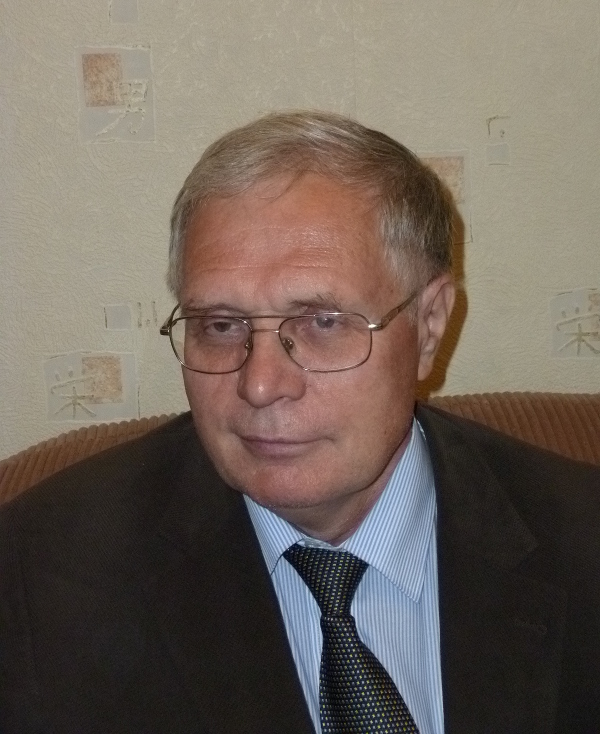
|

|
VIII-th International Conference "SOLITONS, COLLAPSES AND TURBULENCE: Achievements, Developments and Perspectives" (SCT-17) in honor of Evgeny Kuznetsov's 70th birthday
May, 21-25, 2017 Chernogolovka, Russia |
Topological Bright and Dark 2D and 3D-Dissipative Optical Solitons: Internal Structure, Symmetry, and Motion
Abstract:
Lasers as a source of high-power and coherent radiation, and new nonlinear-optical materials provide unique possibility for research of complex field structures, one of the most exciting of which are optical solitons. Among these localized structures, the dissipative optical solitons based on the balance of energy input and output in the domain of localization, are characterized by the highest measure of stability and by extremely wide variety of their forms.
Optical solitons are often treated as light particle-like structures. However, they are spatially distributed and have certain internal structure. For dissipative solitons, of special importance is distribution of energy fluxes. In the talk, we present the topological structure of these fluxes in 2D- and 3D-laser (dissipative) solitons found on the basis of analysis of generalized complex Ginzburg-Landau equation and discuss the connection between the structure symmetry and solitons? motion.
The first scheme is a wide-aperture laser with a saturable absorber under conditions of classical bistability that means the possibility of homogeneous lasing and non-lasing regimes for the same parameters of the scheme, depending on the initial conditions [1]. There are various bright and dark, axially symmetric and asymmetric, fundamental and topological 2D-laser solitons and their complexes with weak and strong coupling of solitons. Inside solitons, there are domains with energy source and sinks, depending on the sign of the transverse Poynting vector divergence [2]. The elements of the domains symmetry include lines of symmetry and symmetry of rotation to an angle being a fraction of $2\pi$. The soliton complexes with different symmetry can be motionless, rotating, and moving in the straight line or even curvilinearly.
The second scheme is continuous homogeneous medium with saturable gain and absorption and their frequency and weak angular selectivity. There are also stable symmetric and asymmetric 3D-solitons and their complexes with rectilinear and uniform motion, rotation, and curvilinear motion along a 3D spiral-like trajectory, depending on the symmetry of light intensity and energy fluxes? distributions. Presented is a new type of asymmetric 3D-laser vortex solitons with curved vortex line; the solitons rotate and precess [3]. We demonstrate also 3D-instability of dark quasi-2D solitons with vortex line as a straight line.
N.N.R. is grateful to Prof. E.A. Kuznetsov for numerous and helpful discussions.
[1] N. N. Rosanov, Dissipative Optical Solitons. From Micro- to Nano- and Atto- (Fizmatlit, Moscow, 2011, in Russian).
[2] N. N. Rosanov and S. V. Fedorov, "Topology of energy fluxes in vortex dissipative soliton structures," J. Opt. Soc. Am. B 18, 074005 (2016).
[3] N. A. Veretenov, N. N. Rosanov, and S. V. Fedorov, ?Rotating and precessing dissipative-optical-topological-3D solitons,? Phys. Rev. Lett. 117, 183901 (2016).
Optical solitons are often treated as light particle-like structures. However, they are spatially distributed and have certain internal structure. For dissipative solitons, of special importance is distribution of energy fluxes. In the talk, we present the topological structure of these fluxes in 2D- and 3D-laser (dissipative) solitons found on the basis of analysis of generalized complex Ginzburg-Landau equation and discuss the connection between the structure symmetry and solitons? motion.
The first scheme is a wide-aperture laser with a saturable absorber under conditions of classical bistability that means the possibility of homogeneous lasing and non-lasing regimes for the same parameters of the scheme, depending on the initial conditions [1]. There are various bright and dark, axially symmetric and asymmetric, fundamental and topological 2D-laser solitons and their complexes with weak and strong coupling of solitons. Inside solitons, there are domains with energy source and sinks, depending on the sign of the transverse Poynting vector divergence [2]. The elements of the domains symmetry include lines of symmetry and symmetry of rotation to an angle being a fraction of $2\pi$. The soliton complexes with different symmetry can be motionless, rotating, and moving in the straight line or even curvilinearly.
The second scheme is continuous homogeneous medium with saturable gain and absorption and their frequency and weak angular selectivity. There are also stable symmetric and asymmetric 3D-solitons and their complexes with rectilinear and uniform motion, rotation, and curvilinear motion along a 3D spiral-like trajectory, depending on the symmetry of light intensity and energy fluxes? distributions. Presented is a new type of asymmetric 3D-laser vortex solitons with curved vortex line; the solitons rotate and precess [3]. We demonstrate also 3D-instability of dark quasi-2D solitons with vortex line as a straight line.
N.N.R. is grateful to Prof. E.A. Kuznetsov for numerous and helpful discussions.
[1] N. N. Rosanov, Dissipative Optical Solitons. From Micro- to Nano- and Atto- (Fizmatlit, Moscow, 2011, in Russian).
[2] N. N. Rosanov and S. V. Fedorov, "Topology of energy fluxes in vortex dissipative soliton structures," J. Opt. Soc. Am. B 18, 074005 (2016).
[3] N. A. Veretenov, N. N. Rosanov, and S. V. Fedorov, ?Rotating and precessing dissipative-optical-topological-3D solitons,? Phys. Rev. Lett. 117, 183901 (2016).
Authors
(no additional information)(no additional information)
(no additional information)
Contact webmaster
